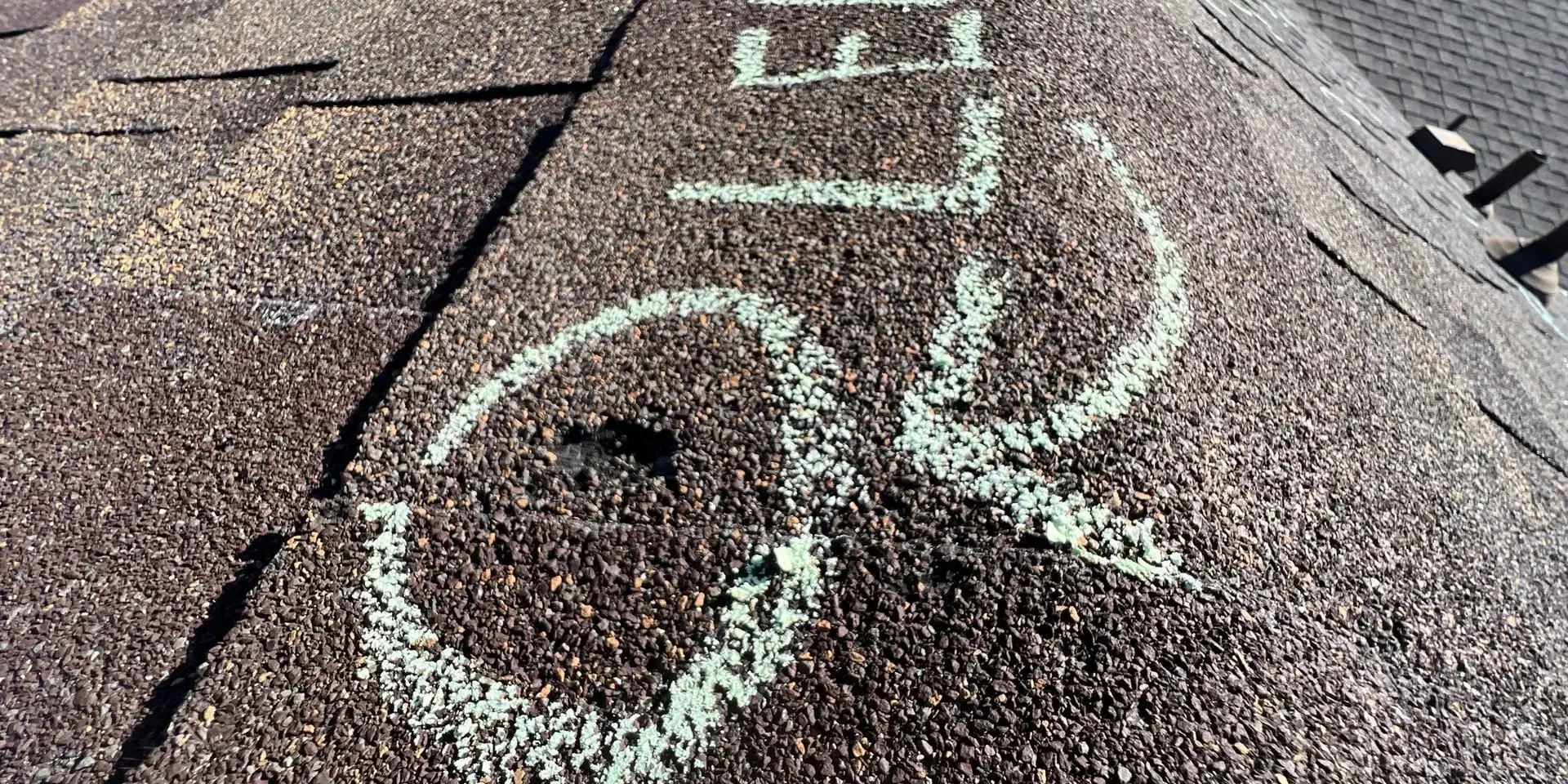Roof Hail Damage in Monument, CO
Recognizing the Impact of Hail on Your Roof
Hailstorms in Monument can cause significant damage to your roof, often leaving it vulnerable to further issues like leaks and structural deterioration. Understanding how to identify the signs of hail damage and knowing what actions to take can protect your home from more severe problems down the line. This guide will walk homeowners through the essential steps for detecting roof hail damage and highlight preventive measures that ensure long-term roof health.
Key Signs of Roof Hail Damage
Hailstorms can vary in intensity, but even moderate hail can wreak havoc on a roof. After a storm, it’s important to inspect your roof for the following critical signs of damage:
1. Damaged or Missing Shingles
Shingles are the most exposed part of your roof and are often the first to show damage after a hailstorm. Look for shingles that appear cracked, dented, or completely missing. Hail can also create soft spots in the shingles, making them more vulnerable to future damage. Pay special attention to the roof’s slopes that faced the storm, as these areas are often hit hardest.
2. Granule Loss
Asphalt shingles have protective granules on their surface, which can be knocked loose by hail. This granule loss is a key indicator of hail damage and can result in the underlying material becoming exposed. Without the protective layer of granules, shingles degrade faster and become more prone to leaks. Granule loss can often be seen in your gutters or downspouts as small particles collected after the storm.
3. Water Leaks and Stains
One of the more serious consequences of hail damage is water infiltration. Check your ceilings and attic for any water stains or signs of moisture. Small cracks or punctures in the roof from hail can allow water to seep into your home, leading to costly repairs if left untreated.
4. Dented Gutters and Downspouts
Your roof’s drainage system can also be affected by hail. Gutters and downspouts that are dented or bent may struggle to properly channel water away from your home. Inspect these components closely and repair any dents to ensure proper drainage, as inadequate drainage can lead to foundation issues over time.
5. Damaged Roof Vents and Flashing
Roof vents, flashing, and other metal elements on the roof are susceptible to hail impacts. Look for any visible dents, cracks, or breaks in the vents and flashing. Flashing, which is used around chimneys, skylights, and other roof penetrations, can become dislodged or damaged, leading to leaks. Repairing or replacing damaged flashing promptly is essential to maintaining a watertight roof.
6. Check for Impact on Skylights and Chimneys
Skylights and chimneys can also be damaged by hail. Cracks in skylights or damaged chimney caps are often overlooked during initial inspections but can lead to significant problems, including leaks and drafts. Ensure these areas are thoroughly checked for signs of wear and tear.
The Importance of Regular Roof Inspections After a Hailstorm
Even if no immediate damage is visible, hail can weaken your roof’s integrity over time. Regular inspections, especially following a severe storm, are crucial to catching issues early before they develop into more serious problems. Homeowners in Monument and surrounding areas should schedule a roof inspection at least annually, particularly if hailstorms are common in the region.
Preventive Measures and Long-Term Roof Maintenance
In regions prone to hail, taking preventive steps can help minimize future damage. Consider installing more durable roofing materials, such as impact-resistant shingles, which are specifically designed to withstand hail and other extreme weather conditions. Additionally, maintaining your roof by regularly clearing debris, inspecting seals and flashing, and ensuring proper attic ventilation can help extend the life of your roof.
1. Impact-Resistant Roofing
Homeowners concerned about frequent hailstorms may benefit from upgrading to impact-resistant shingles. These materials are designed to absorb hail impact without breaking or dislodging granules, offering a longer-lasting solution for homes in hail-prone areas.
2. Routine Gutter and Downspout Maintenance
Ensuring that gutters and downspouts are in good working condition is essential for preventing water damage. Clean your gutters regularly to prevent clogs and check for dents or warping after hailstorms to ensure proper water flow.
3. Addressing Minor Issues Before They Escalate
While it may be tempting to overlook small issues like granule loss or a few cracked shingles, addressing them early can save you from larger, more expensive repairs. Small punctures or cracks can quickly lead to leaks, which can cause rot, mold growth, and damage to your home’s structure.
Working with Professional Roofing Contractors
For many homeowners, inspecting the roof themselves can be challenging, especially when it comes to identifying subtle signs of damage. Hiring a professional roofing contractor is the best way to ensure a thorough inspection and accurate assessment of any damage. Professional contractors can also recommend appropriate repairs or replacements based on the severity of the hail damage.
GCCS Roofing, Inc., in Monument, CO, provides expert roofing services and specializes in assessing and repairing hail damage. Their team of experienced professionals ensures that your roof is restored to its optimal condition after a hailstorm, protecting your home for years to come.
Conclusion
Hail damage can be a serious threat to your roof’s longevity, particularly in areas like Monument where storms are frequent. By learning how to identify key signs of damage, conducting regular inspections, and addressing issues promptly, you can protect your home from further deterioration. Whether it’s replacing damaged shingles, repairing flashing, or upgrading to impact-resistant roofing materials, proactive steps will help safeguard your roof against the long-term effects of hail.







